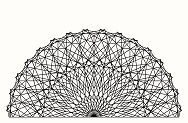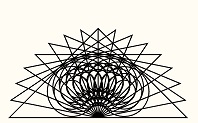


 |
 |
 |
I'm not including documentation with these overviews on evolution, because the details get distracting. There is a gradual accumulation of evidence indicating that E. coli (Escherichia coli) evolved a symbiotic relationship to the large intestine of animals as a method of breaking down nucleic acids (genetic material) that are not used as nutrients by animals. Other scientists do not know this. A good start for this subject is environmental microbiology which focusses on fecal contamination of water. E. coli is the primary indicator of fecal contamination. The primary indication of E. coli is acid and gas in a liquid medium consisting of Brilliant Green Lactose-Bile. Lactose is metabolized down to carbon dioxide producing gas. In the large intestine, ribose would be the primary sugar producing carbon dioxide rather than lactose. Biologists don't know that E. coli produces gas from nucleic acids in the large intestine. They have been trying to produce a type of beans that do not produce gas, while they don't know that the ribose of nucleic acids is the source of the gas in intestines. Animals do not use nucleic acids as nutrients for a lot of reasons. One reason is that breaking down the polymers is not easy. Bacteria and yeast break nucleic acids down to nucleosides using three enzymes during autolysis. Splitting off the phosphate is not easy, but the nucleotides are too hard to handles with the phosphate attached. Another reason for animals not using nucleic acids as nutrients is that they would be located in the wrong place. Not just anything can enter the blood as a nutrient. A carrier is often required. The development of gout results from the accumulation of uric acid from purine breakdown. In other words, when nucleic acids do enter the blood, they can end up doing the wrong things, because they are not used as nutrients. Small molecules of nucleic acids can enter the blood and must be dealt with as problematic substances rather than nutrients. White blood cells normally remove undesirable substances from the blood. Removing nucleic acids would tie up white blood cells and weaken the immune system. Nutrients which are low in genetic material keep the immune system stronger than other foods would. Rice is good for that purpose. To get nucleic acids from the blood to the nuclei of cells would require them to go through the cytoplasm of the cells. It would be like carrying lumber through a church. The cytoplasm of cells is very highly organized, and diffusion through it is quite problematic. So nucleic acids are synthesized where they are needed, which is near, or inside of, the nuclei. For these reasons, some types of intestinal problems could result from a disruption of the symbiotic relationship between E. coli and the large intestine. Biologists would not know this, since they don't know that E. coli evolved a symbiotic relationship to animal intestines. They assume E. coli is accidentally found in animal intestines, as indicated by the promotion of "probiotic" nutrients such as yogurt for intestinal health. The bacteria in those probiotic nutrients do not include E. coli. What then is the solution to symbiosis problems with E. coli? Producing the gas that biologists try to avoid would be somewhat of the solution. But beans are not the most ideal nutrients, since they contain a lot of oil and are not real easy to digest. A quick method of getting some genetic material to E. coli is to eat nutritional yeasts. Yeasts are high in genetic material without digestion and oil problems, as nutritional yeasts are tailored for easy digestion including optimized nutrition.
|
|
|||||||||||||||||
 |
 |
 | ||
 |
 |
 |
||